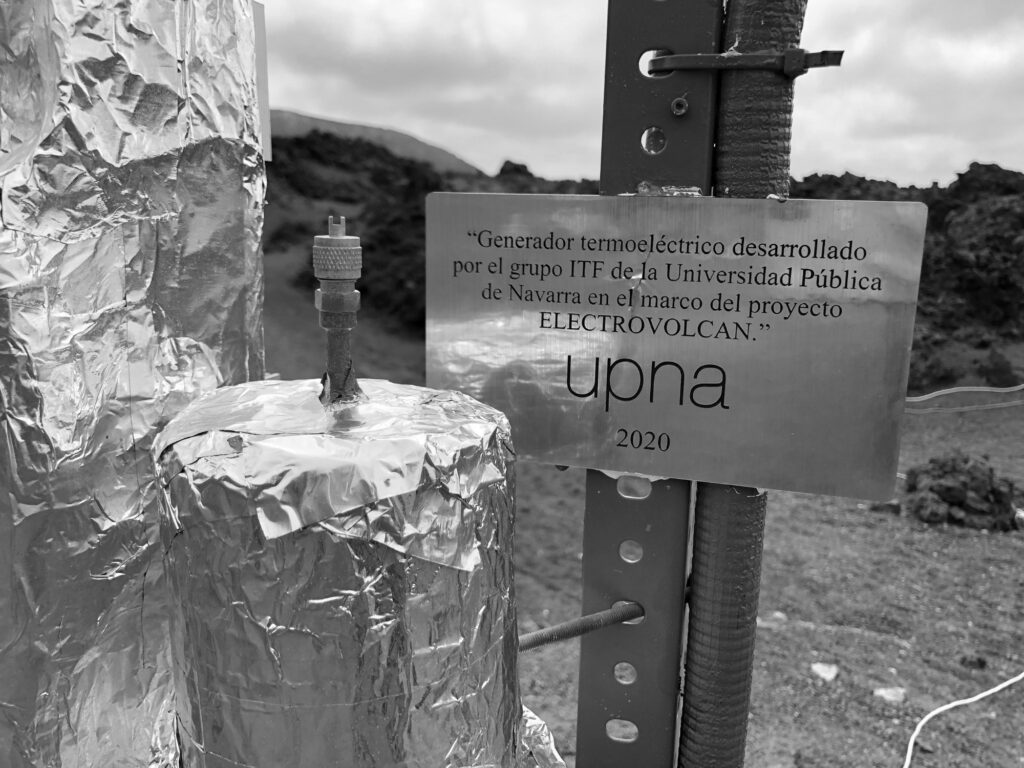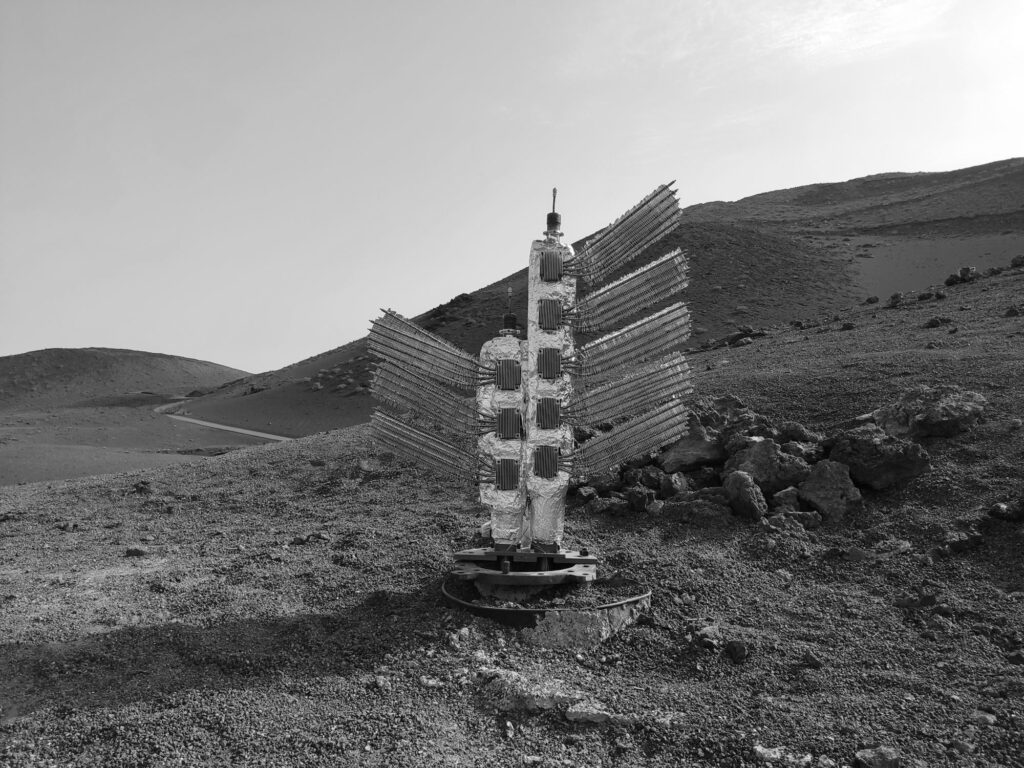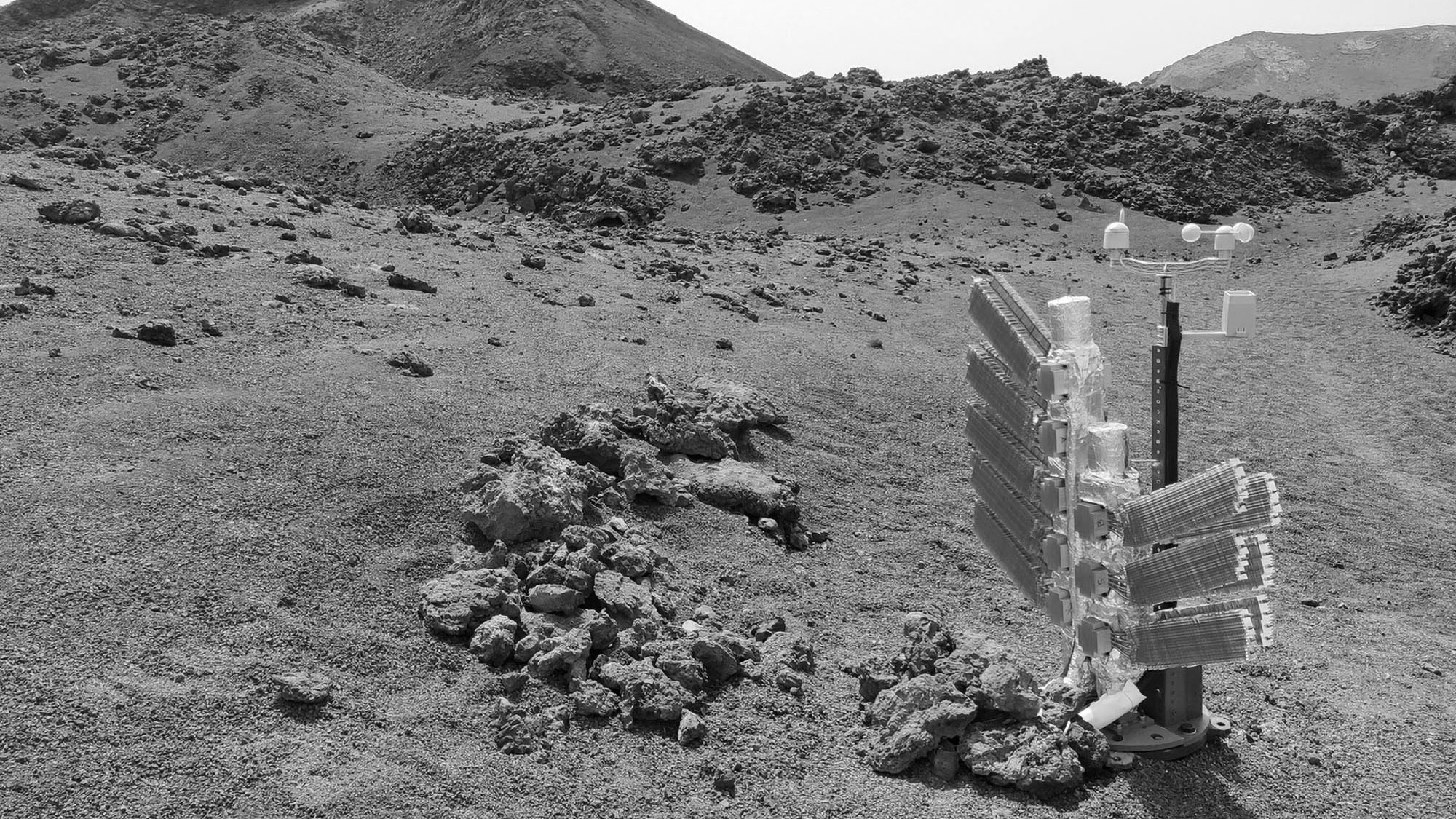Spanish scientists have installed a world-first thermoelectric generator in the island of Lanzarote, a trial run they expect will pave the way for a wider use of volcanic heat from the underground for electricity production.
The team hopes to add enough generator stations in coming years to cover the power consumption of 200 households in Lanzarote, a volcanic Spanish holiday island in the Atlantic Ocean.
David Astrain, 49, researcher and leader of the group of Thermal and Fluids Ingenierie of the Public University of Navarra, said in an interview with Real Press that “it is the first device in the world using the thermoelectric effect to transform volcanic heat in dry hot rock sites to electricity”.
The first prototype was installed at the end of August in the National Park of Timanfaya, in the island of Lanzarote in the southwestern Spanish region of Canary Islands, over a huge geothermal anomaly where the temperatures can reach as much as 500 degrees celsius (932 degrees fahrenheit) just six feet under the surface. In the exact location picked for the trial run, the temperature is 170 degrees celsius (338 degrees fahrenheit) four and a half feet down, Mr Astrain said.
“The device is based on the thermoelectric effect, which means that a difference in temperatures will generate an electric current between its built in semiconductors. The current is proportional to the difference in temperatures between the conductors. The higher that difference is, the more energy we will be able to produce”, he explained.

The prototype has an output capacity of 35W and has the advantage over solar cells that it will generate power around the clock and not just when the sun is out.
Another important aspect is that the unit has no moving parts, which makes it compact, noiseless and durable. It needs no maintenance and is less disturbing to the eye than a wind turbine.
There are a number of other areas in Lanzarote that share the same geothermal properties. The heat pockets were created by lava from the latest volcanic eruptions in the island, which took place from 1730-1736 and in 1824. The hot lava hasn’t broken entirely through to the surface, which means that the crust is much cooler than the layers just below, creating the massive differences in temperatures that are needed to produce electricity this way.
Conventional geothermal energy is produced by digging between 1,500 and 2,500 metres (4921 and 8202 feet) into the ground to release hot vapor to drive a turbine.
The scientists would like to feed a nearby restaurant with geothermal power from their innovative generators. It is located close to another area in the national park with similar geothermal anomalies. There are no powerlines in the park. The restaurant is powered by a diesel-fired generator, but according to Mr Astrain it would take ten geothermal power generators to make the restaurant self-sufficient. This would require an investment of around EUR 100,000 (GBP 90,166), he said.
“We have calculated that the investment would be recovered in 10 years, as the fuel currently being used also carries considerable costs”.

“When used as an alternative power system, it could help lower emissions of CO2 to the atmosphere, and thereby make a contribution towards reducing global warming”, he said.
The prototype generator has an output capacity of 35W. If installed in all the areas in Lanzarote that the scientists know for certain provide the needed geothermal conditions, the island could reach a total geothermal electricity production of 680 MWh, or enough to cover the consumption of 200 Spanish homes, Mr Astrain said.
Other potential areas are currently being investigated to provide a precise estimate of the potential, Mr Astrain said.
The technology can also be used to monitor volcanoes, he said.
It would make the volcano monitoring stations self-sufficient with power, ensuring that they wouldn’t run out of battery and stop transmitting important information.
“This device can be used all around the world as the volcanos always have hot temperatures near the surface of the grounds”, he said.
The project has secured funding for three to four years of research and trials.

To find out more about the author, editor or agency that supplied this story – please click below.
Story By: Ana Lacasa, Sub-Editor: Joana O Mihajlovska, Agency: Real Press
The Ananova page is created by and dedicated to professional, independent freelance journalists. It is a place for us to showcase our work. When our news is sold to our media partners, we will include the link here.




